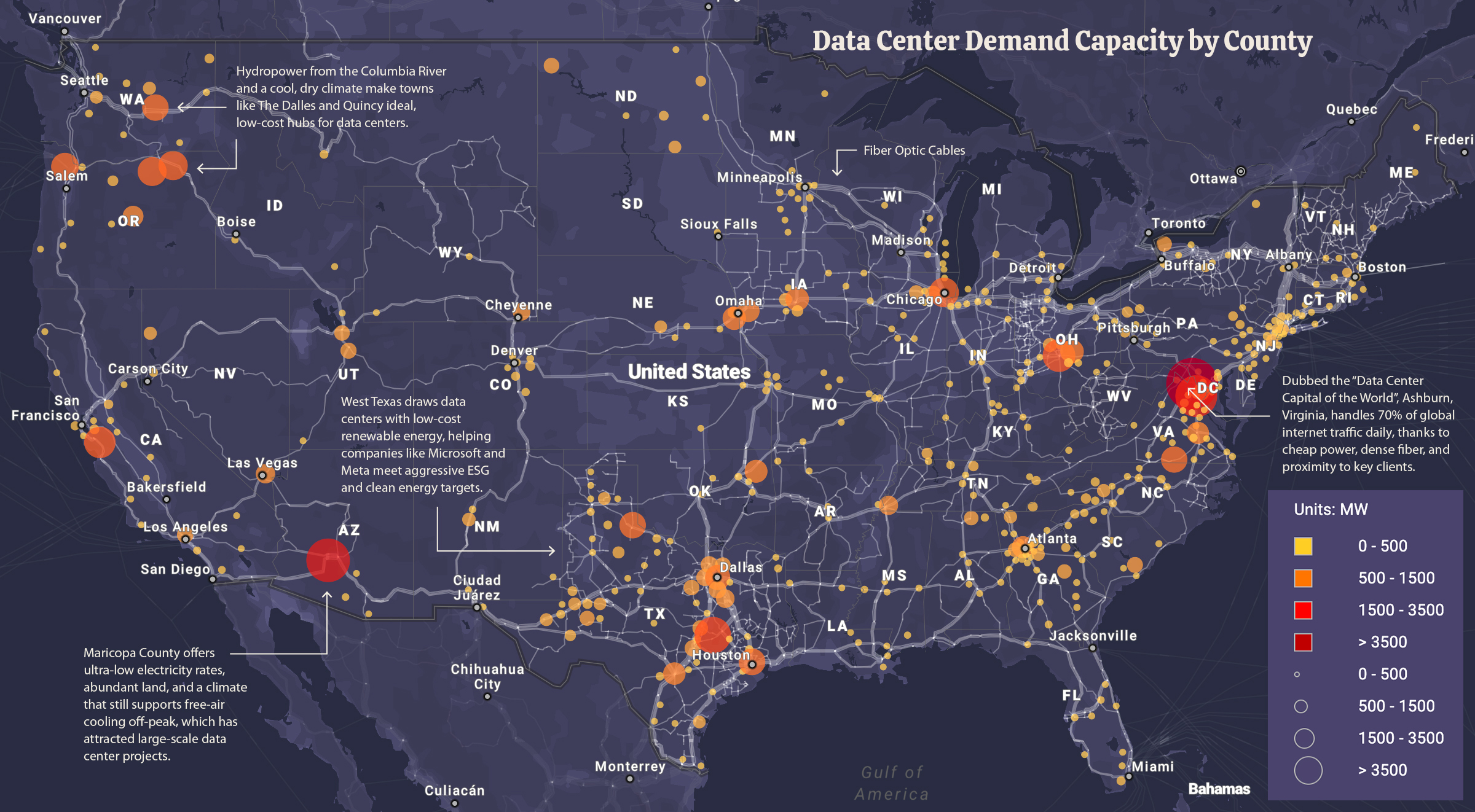AI의 다음 경계: 정책, 인프라 및 산업 동맹이 2025년 기술 지형을 재정의하다
Author: Editorial Team

이사회실에서부터 정부 회의실에 이르기까지 2025년의 AI 서사는 더 이상 단일 기술 이야기가 아니라 정책, 인프라, 시장 전략의 직조물이다. 연구실이 기계학습의 경계를 넓히는 가운데 업계 리더들은 전통적 방어를 능가할 수 있는 새로운 위협인 AI 기반 사이버범죄의 등장에 경고한다. 한편 하드웨어 기업들은 더 빠르고 에너지 효율이 높은 가속기를 제공하기 위해 경쟁하고, 클라우드 및 데이터센터 구축사들은 급증하는 수요를 충족할 차세대 용량 확장을 계획한다. 이러한 환경에서 국경 간 협력, 규제 논쟁, 그리고 야심 찬 산업 프로그램들이 모여 AI를 얼마나 빨리 배치할 수 있는지, 보안과 신뢰성의 비용이 어느 정도가 될지 결정한다. 이 특집은 강력한 사이버범죄 법 제정 요구에서 모듈형 AI 개발 플랫폼의 등장에 이르기까지 기술 생태계 전반의 발전으로부터 얻은 통찰을 종합한다. 또한 주요 하드웨어 파트너십에서 AI 인프라의 확장으로 이어지는 가속화된 경제를 반영한다.
정책 및 보안 헤드라인은 전문가들이 AI 기반 사이버범죄에 대한 법적 체계를 촉구하면서 더욱 선명해지고 있다. Businessworld 보도는 AI가 촉발하는 사기, 피싱, 기타 범죄를 억제하기 위해 법률을 강화하고 국제 협력을 촉진해야 한다는 업계 리더들의 긴급성을 강조한다. 제안은 AI가 생성한 기만 행위에 대한 책임을 명확히 하는 것에서부터 데이터 보호 및 사건 보고를 위한 최소 기준 설정, 그리고 수사를 신속하게 진행할 수 있는 국경 간 정보 공유 메커니즘 만들기에 이르기까지 다양하다. 이러한 논쟁은 범죄 네트워크가 AI를 활용해 매우 개인화된 피싱 메시지, 딥페이크, 합성 신원을 만들어내는 상황에서 벌어지고 있다. 옹호자들은 강력하고 조화로운 규제가 없다면 AI 기반 혁신의 이익이 증가하는 위험에 의해 약화될 수 있다고 주장한다. 비평가들은 보안과 혁신 간의 균형을 맞추고 연구와 배치를 방해하는 제도나 체계를 피해야 한다고 경고한다. 총론적 목표는 급변하는 기술 주기에 정책을 맞추는 것이며, 방어자, 기업, 소비자가 공통의 프레임워크를 공유하도록 보장하는 것이다.
수백 개의 개발 팀이 더 안정적이고 확장 가능한 워크플로를 약속하는 모듈형 AI 아키텍처로 방향을 바꾸고 있다. Hackernoon의 MCP 서버 업데이트 보도는 구조화된 산출물, 유도 기법, 자원 링크가 현대 LLM 운용에 점차 필수적이 되고 있음을 강조한다. 전문화된 구성 요소가 인지, 추론, 출력 생성을 다루는 모듈형 스택으로 이동하면 개발자들은 능력을 빠르게 재결합하고 대안을 테스트하며 의사 결정을 더 투명하게 추적할 수 있다. 초기 채택자들은 더 빠른 반복 주기, 재현성 향상, 기존 소프트웨어 생태계와의 더 나은 통합을 보고한다. 이 콘텐츠의 대부분이 아직 유료로 남아 있지만, 더 넓은 시사점은 분명하다: 모듈식이고 감사 가능한 접근법이 2025년의 복잡하고 이질적인 AI 도구 생태계를 항해하는 데 점점 더 필수적이라는 점이다.

모듈형 AI 워크플로우의 일러스트로, MCP 스타일 스택인 지각, 추론, 출력 구성요소를 반영한다.
MIPS, a company closely watched for its AI-enabled hardware, announced the appointment of Alan Li as Head of Business Development for China. Li’s track record in automotive, industrial, and communications infrastructure is expected to accelerate MIPS’ regional growth and partnerships as demand for edge AI accelerators expands across Asia. The move signals how hardware players are aligning with national and regional AI ambitions, reinforcing the trend toward coordinated, cross-border deployment of AI capabilities—from manufacturing floors to smart cities—and highlighting the importance of local partnerships in navigating regulatory and market landscapes.

앨런 리, MIPS의 중국 비즈니스 개발 책임자 임명으로 지역 AI 하드웨어 전략 강화가 시사된다.
Beyond the lab and the showroom floor, the science underlying AI and computation continues to be inspired by breakthroughs in fundamental physics. The Hindu’s report on extreme nuclear transients near black holes — where stars are stretched, torn, and violently energized as they approach event horizons — underscores how complex, high-energy phenomena demand sophisticated modeling and data analysis. While not an AI article per se, such science illustrates the scale and complexity that AI systems aim to model, simulate, and accelerate. The cross-pollination between astrophysics, quantum physics, and machine learning is helping to drive novel algorithms, improved simulations, and better understanding of information flow in chaotic systems.

블랙홀 근처의 극한 에너지 과정에 대한 천체물리학 시뮬레이션 — AI가 해결하려는 복잡한 데이터 문제를 상기시키는 그림.
Hardware competition and collaboration remain at the heart of AI acceleration. One headline involves Nvidia’s potential collaboration with Samsung to advance AI chip technology and memory bandwidth through innovations like high-bandwidth memory (HBM) solutions. Another major strand is the partnership between Nvidia and Intel to co-develop multiple generations of custom datacenter and personal computing products, reflecting a broader strategy to diversify supply chains and ensure rapid deployment of AI workloads across enterprise and edge environments. These dynamics highlight how competitive pressures and strategic alliances are shaping the hardware stack that underpins modern AI—from GPUs to accelerators, memory, and system-integration capabilities.

NVIDIA와 Samsung이 AI 칩 기술을 발전시키며 AI 하드웨어 경쟁의 새로운 국면을 시사한다.
As organizations scale AI, data-center energy consumption has emerged as a critical constraint. Visual Capitalist’s data-center power map and related visualization, discussed in coverage of U.S. data-center energy use, highlights the enormous energy requirements behind modern AI. The information underscores the need for efficiency, wiser capacity planning, and smarter cooling, as data centers could see energy demand doubling by the end of this decade. The related analysis from FinancialContent aggregations also points to the geographic distribution of data-center activity and the strategic importance of location, grid reliability, and policy frameworks that incentivize clean energy and demand-response programs. In short, the infrastructure that makes AI possible is also demanding substantial electrical power, making energy efficiency a central competitive differentiator.

미국 내 AI 워크로드를 구동하는 데이터센터의 방대한 에너지 발자국을 보여주는 지도.
The United Kingdom’s ambitious AI infrastructure push is another major inflection point, with reports suggesting that Microsoft and Amazon are among the primary beneficiaries. The UK government’s sizable investment—on the order of tens of billions—aims to accelerate the deployment of AI-ready infrastructure, data centers, and cloud capacity. For multinational cloud players, this represents a potential rebalancing of cloud economics and a chance to expand regional service capabilities. The development also suggests new opportunities for local AI startups and research institutions to collaborate with global technology giants, leveraging a more connected, data-rich environment to accelerate experimentation and deployment across sectors such as health care, finance, and manufacturing.

영국과 유럽의 AI 주도 인프라 개발 및 데이터센터 확장을 보여주는 도해 지도.
In the investment community, quantum computing remains a hot topic. The Fool’s discussion of three quantum computing stocks that could make a millionaire reflects the high-risk, high-reward nature of this frontier. While the technology promises exponential gains in solving certain classes of problems, investors should weigh valuation, execution risk, and the timeline for practical, large-scale quantum advantage. The broader takeaway is that quantum acceleration is increasingly considered part of the longer horizon for AI computing, with potential implications for optimization, materials science, cryptography, and beyond.

양자 컴퓨팅 주식이 투자자들의 관심을 끌고 있다.
The corporate AI-infrastructure landscape also features high-stakes collaborations among industry leaders. Global Legal Chronicle reports on NVIDIA and Intel’s collaboration to jointly develop multiple generations of custom datacenter and personal computing products, reflecting an enduring trend toward mega-deals and strategic alignments that aim to secure leadership across hardware, software, and services in AI ecosystems. Such alliances help diversify risk, accelerate product roadmaps, and standardize interfaces that enterprises rely on to deploy AI at scale.

Global Legal Chronicle coverage of a major NVIDIA–Intel collaboration on AI infrastructure.
Finally, the Indian AI market continues to garner attention from investors and builders alike. NetWeb Technologies’ reported fresh ₹450 crore order and bullish commentary from SEBI analysts signal strong momentum for AI-ready infrastructure providers in India. As AI workloads broaden from cloud data centers to regional campuses and edge deployments, local suppliers find opportunities in a rapidly expanding market with global demand. The Indian story complements the UK and US narratives, illustrating how AI-enabled growth is spreading across geographies with differing regulatory and market dynamics.

NetWeb Technologies가 대형 주문을 확보하고 분석가들이 낙관하는 가운데 인도의 AI 인프라 시장이 탄력을 받고 있다.
As these threads weave together—policy safeguards, scalable modular AI architectures, strategic hardware partnerships, data-center growth, and expanding regional ecosystems—the 2025 tech landscape looks less like a single hype cycle and more like a coordinated effort to build robust, secure, and globally interconnected AI capabilities. The coming years will test whether all these pieces can align: regulations that deter misuse, hardware and software ecosystems that accelerate innovation, and energy and grid infrastructure capable of supporting a digital economy that relies on AI to drive productivity across industries.